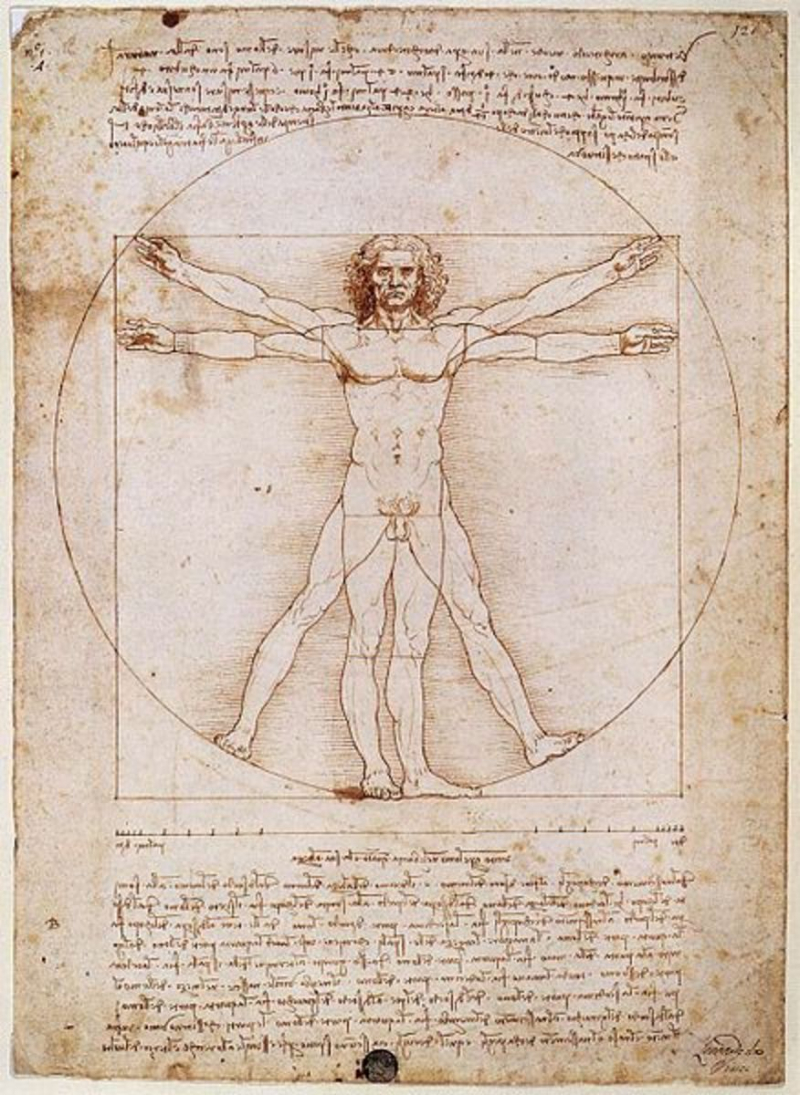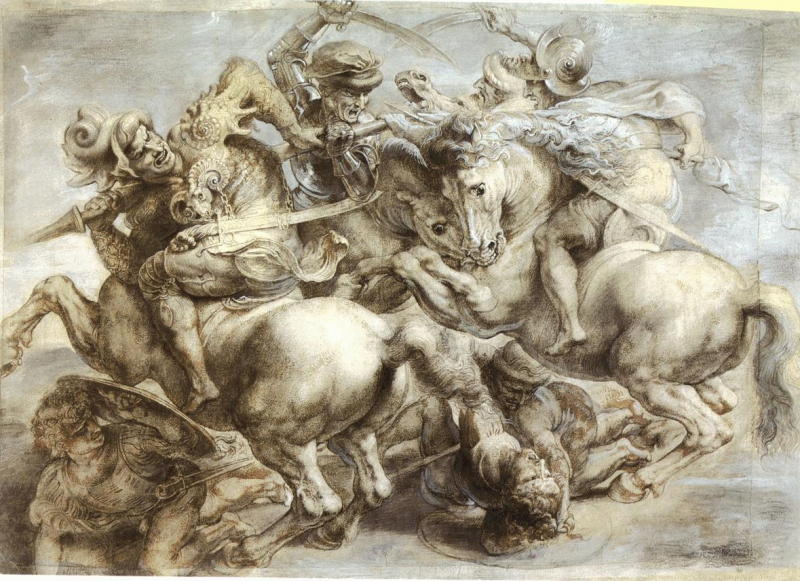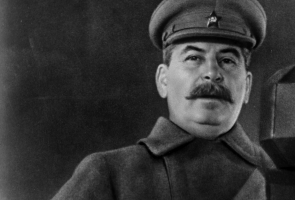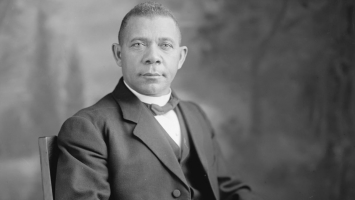Top 10 Interesting Facts about Leonardo da Vinci
The prototypical Renaissance man, Leonardo da Vinci (1452-1519) was a painter, sculptor, architect, writer, anatomist, geologist, astronomer, botanist, ... read more...inventor, engineer, and scientist. His most well-known creations are "the Mona Lisa," "The Last Supper," and "the Vitruvian Man." He is widely regarded as one of the finest artists of all time. Here are 10 interesting facts about Leonardo da Vinci that you (probably) didn't know.
-
Leonardo was the illegitimate child of Caterina, a peasant, and Messer Piero Fruosino da Vinci, a successful and influential local lawyer. The parents of Leonardo da Vinci never wed. Before moving into his father's house, who had wed another lady, the young da Vinci lived with his mother until he was five years old. The artist kept diaries throughout his adult life, which reveal that he had a rather distant connection with his mother and only sometimes wrote to her. His texts imply a stronger relationship with his father, whose passing da Vinci mourned terribly.
Leonardo "had the good luck to be born out of wedlock," according to Isaacson, who makes this claim at the opening of his book. "He would have been sent to one of the classical schools in Florence for the aspiring upper-middle classes and rising middle classes, or a university, and he would have been stuffed full of the medieval scholastic learning of the time," Isaacson said on the podcast Recode/Decode. If he had been a legitimate son, he would have been expected to follow in his father's line of work and become a notary. Instead, Leonardo was formally untrained, but he was still able to pursue his interests, learn via experimenting, and pursue any kind of the arts, including poetry, sketching, etc.
Isaacson also points out that at the time, having an illegitimate child did not carry the same shame as it had in earlier times. Ten godparents attended Leonardo's baptism, which was a big occasion. He spent parts of his boyhood living with both his parents and his grandparents, and finally, his father assisted him in obtaining apprenticeships in Florence. There were many illegitimate offspring who rose to prominence in society, including members of reigning families like the Medicis and Borgias. It makes sense why bastards enjoy a "golden age" now.

Photo: Birthplace of Leonardo da Vinci in Anchiano - artsandculture.google.com 
kienthuc.net.vn -
One of the interesting facts about Leonardo is that he never attended a formal school, in contrast to other famous Renaissance painters. Although he had some home tutoring on some topics, he was not proficient in Latin, the time's academic language. This didn't stop Leonardo from moving on. Leonardo noted in his diaries that knowledge does not begin with the study of Latin. He asserted that experience is where it all starts and that he is a "disciple of experience."
Da Vinci was raised in a rural area of Tuscany and spent a lot of time outside admiring the natural world. His notebooks show that he was particularly passionate about the characteristics of water and the behavior of raptors. His earliest recollection, according to the artist, was of a dream in which a raptor touched his face and wedged its tail feathers between his lips.
As mentioned above, he was taught the fundamentals of reading, writing, and math, but much of his in-depth education came later in life. For instance, he primarily taught himself Latin, which at the time was the language of academia. He was passionate about advanced mathematics, but the subject didn't enter his life until he was in his 30s and began devoting himself to it.

fee.org 
sapiens.org -
It is unclear exactly when Leonardo began working as an apprentice at Florence's most prestigious workshop, Verrocchio's studio. However, it has been hypothesized that Leonardo began his training when he was 17 years old when his father relocated to Florence and listed Leonardo as a dependent on a tax form from 1469.
He would master the fundamentals of engineering and technical arts as well as painting and sculpture techniques here. Chemistry, drawing, metallurgy, and metalworking were among the subjects covered in this. The learner quickly advanced to the level of a master. The far more seasoned artist, Verrocchio, is said to have been so moved by the young man's brilliance that he promised never to paint again after da Vinci painted one of the angels in Verrocchio's painting "The Baptism of Christ."
Due to its proximity to the shop, he also worked at Antonio Pollaiuolo's workshop at the same time. Da Vinci joined the Florence painter's guild when he was 20 years old, but he continued to study under Verrocchio for the following five years before striking out on his own. His first piece of art, a pen-and-ink painting of a landscape, was created in 1473.

baotanglichsu.vn 
blogs.nottingham.ac.uk -
The Last Supper (created between 1495 and 1498) and the Mona Lisa (created between 1503 and 1506) are among Leonardo da Vinci's most famous works, however, probably his finest work was destroyed by war. In order to finish a large horse statue contract in Francesco Sforza's honor, Da Vinci is said to have been persuaded to travel to Milan in 1482. When finished, the statue would have been substantially bigger than the two surviving equestrian sculptures from the Renaissance period created by Donatello and Verrocchio, da Vinci's teacher.
The Duke of Milan, Sforza's son, had commissioned the monument, which was over 20 feet tall. The project, known as Gran Cavallo, or "Great Horse," was laboriously worked on by Leonardo da Vinci for 17 years. Given his pursuit of other interests, Leonardo's lengthy schedule was not exceptional.
Da Vinci had intended to cast the clay model in bronze around the year 1493, but he ultimately had to give up since the metal intended for the sculpture had been assigned for the cannons. The approaching French invasion was the cause of this. As expected, the French forces took control of the city and deposed the Duke of Milan. The clay model, which was about to become one of the most important Renaissance monuments, was destroyed at that moment.

Photo: Leonardo’s Study of horses, c. 1490 - saatchiart.com 
Photo: A modern version of Leonardo da Vinci’s Gran Cavallo, unveiled on September 10, 1999 at the Hippodrome de San Siro in Milan - pinterest.com -
The human body was among Leonardo da Vinci's many areas of interest and thirst for knowledge. He was not content to merely research what was offered. In order to make his artwork as realistic as possible, Leonardo went one step further and began studying anatomy. He dissected roughly 30 bodies of the deceased in hospitals in Rome, Florence, and Milan in order to capture every detail of how a body functioned. He then sketched what he observed. It can be said that this is one of the interesting facts about Leonardo da Vinci.
Similar to everything else Leonardo learned, anatomy evolved from a subject he studied to improve his paintings better to a completely different area of interest. He developed a true interest in human anatomy, to the point that he considered it as a separate field of study separate from his creative endeavors.
He began studying physiology at a young age in addition to his early interest in anatomy's structural details. The majority of Leonardo's anatomical illustrations were created around the 1480s. He utilized this experience to study the human form, and this experience inspired him to produce more than 200 pages of drawings. These photographs of the circulatory systems, muscles, and sinews were extremely exact and detailed. His illustrations, which depict how the heart, lungs, and brain work together as the body's core, are still regarded as a significant scientific advance. In reality, his anatomical pictures paved the way for contemporary scientific depictions.
Leonardo had a thorough understanding of human anatomy, which is evident if you've ever looked closely at any of his anatomical drawings. In order to fully understand how our systems functioned, this knowledge was attained by dissecting both people and animals.

Photo: Superficial anatomy of the shoulder and neck, c. 1510 - rct.uk 
Photo: The muscles of the shoulder, arm and neck, 1518, Royal Collection Trust, UK - wikimedia.org -
One of the interesting facts about Leonardo da Vinci is in his own writings, Leonardo always wrote from right to left. It is possible to read his writing from left to right if you hold a mirror up to the page. Leonardo wrote in this manner in part because he was left-handed and found it simpler to write from right to left.
According to several kinds of research, left-handed people tend to be more creative, and Leonardo most certainly fits that description. One of the most well-known painters who is known to have had a dominant left hand is the Renaissance man. With two hands, Leonardo da Vinci was able to draw simultaneously in both directions. In reality, he penned most of his learnings from right to left, creating a mirror script that was not the simplest to read.
It has been hypothesized that his backward writing was an effort to encrypt his words and thoughts to prevent them from being stolen. He did this to conceal his research since the concepts he was coming up with would have been condemned by the church in the fifteenth century (such as the use of dissections for anatomical studies). Another hypothesis is that because he wrote with his left hand, he wrote backward to prevent spreading the charcoal, chalk, or wet ink he was using. (Recent research has verified, however, what some have long suspected: Leonardo was ambidextrous and occasionally used his right hand for writing.)

Photo: Leonardo da Vinci, Vitruvian Man, c. 1490, Gallerie dell’Accademia, Venice, Italy - owlcation.com 
Photo: An example of Leonardo da Vinci’s mirror writing as seen on his Vitruvian Man (c. 1492) - artincontext.org -
The son of Pope Alexander VI, Cesare Borgia, hired Leonardo da Vinci at the end of his life to produce a map of Imola, a city Cesare had just seized. Cesare Borgia served as the papal army's chief commander and was renowned for his harsh methods of maintaining authority and attempting to subjugate other Italian republics.
For ten months, Leonardo worked as a "senior military architect and general engineer." In order to conduct a study of Borgia's various domains, he journeyed across them. Furthermore, he produced a large number of topographic maps and city layouts that predated contemporary mapping.
It was common practice during the period to overstate the significance of specific structures, such as chapels, in order to make them stand out from the surrounding structures. Leonardo used the technique of paper vedere, his understanding of geometry, and a compass to precisely measure street lengths and building proportions in order to create a more realistic representation of the city. The most typical kind of map is one created in this manner, known as an ichnographic map.
One of the interesting facts about Leonardo is that he was an excellent designer. In addition to developing the double hull and a basic theory of plate tectonics, he also created an armored automobile, a scythed chariot, a pile driver, a revolving crane, a pulley, a lagoon dredge, a flying ship, concentrated solar power, and an adding machine.

Photo: A map by Leonardo da Vinci of the Arno west of Florence, 1504 - wikipedia.org 
Photo: Leonardo da Vinci, Design for a flying machine, 1488 - commons.wikimedia.org -
Another one of the interesting facts about Leonardo da Vinci you probably didn't know is that he produced remarkably little art, despite being one of the greatest painters of all time. In actuality, he is only definitely credited in 15 out of the extant works. The artwork was only a means to an end for Leonardo. Because of his insatiable curiosity, he used painting as a means of expression and a tool to keep track of his discoveries.
Instead, he would spend his time in nature, performing scientific research, dissecting human and animal bodies, and writing inventions, observations, and speculations in his notebooks. His own scientific studies and thinking about technical issues kept him busy. This is a testament to his incredible talent and ability to have a lasting impact on generations of artists because he had produced so few works yet still had a significant impact on subsequent artists.
Some of his well-known paintings, such as The Battle of Anghiari and Leda, are only known through preliminary drawings or reproductions created by other artists after they were misplaced, destroyed, or damaged over time. However, his unparalleled reputation speaks to the power of his artistry. Even with relatively few finished paintings, his effect on painters in his day and future generations cannot be denied.

Photo: The Battle of Anghiari - wikipedia.org 
Photo: Leda y el cisne - flickriver.com -
Leonardo was extremely productive, yet he was never in a rush to complete any one thing in particular. Many of his paintings and other creations, including the Mona Lisa, one of his most well-known works, were shelved or judged incomplete.
In addition to the renowned "Mona Lisa", the "Virgin and Child with St. Anne" is an incomplete painting that features the Virgin Mary, a baby Jesus, and Mary's mother, St. Anne, and is also housed at the Louvre in Paris. Another incomplete da Vinci painting, "St. Jerome in the Wilderness," which features the hermit St. Jerome and his companion, a domesticated lion, is on display in one of the Vatican Museums.
The picture "The Adoration of the Magi," which purportedly depicts a representation of the young artist himself, is among da Vinci's unfinished creations and is maybe the most interesting. Since 1670, the artwork that was left unfinished in 1481 has been housed in Florence, Italy's Uffizi Gallery.
Da Vinci also left behind several unfinished inventions in addition to these incomplete paintings. In actuality, there is no proof that any of the artist's inventions have ever been constructed. Likewise, during his lifetime, none of his writings were ever published. Many of his creations, including the Mona Lisa (ca. 1503–1506), were bequeathed to Sala, his close friend, and helper when he died in 1519. Art historians hypothesized that Leonardo had a debilitating sickness that could have caused the right side of his face to become paralyzed, which would have impeded his productivity in his final years.

Photo: Mona Lisa - vnexpress.net 
Photo: Virgin and Child with St. Anne - wikipedia.org -
At the age of 60, political unrest compelled Leonardo to leave Milan. This brought him to Rome, where he was welcomed by Giuliano de Medici, the Pope's brother. While other painters like Raphael and Michelangelo were working diligently on commissions for the Pope, Leonardo was just granted a stipend and left to his own devices while trying to find employment in Rome.
As a result of his intense frustration, Leonardo left Italy permanently in 1515, five years after Francis I of France gave him the position of "Premier Painter, Engineer, and Architect to the King." Leonardo da Vinci spent the latter years of his life in France where he worked as a painter, architect, and engineer under King Francis I. When Leonardo moved to France, he was free to pursue his interests however he pleased, although he continued to assist the monarch in creating festivals and gardens.
Until the end of his life, Leonardo spent his days in his manor, Cloux, relaxing. When Leonardo passed away in 1519, he left his land to one of his students named Francesco Melzi. He was then buried at the neighboring church of St. Florentin. Sadly, the church was destroyed in 1802 due to damage sustained during the French Revolution. Historians have found it challenging to locate his remains since some of the graves were also damaged. But in 1863, after a team of archaeologists excavated remnants of Leonardo's burial, his gravesite was located. Then, his bones were transferred to St. Hubert, where they still lie today.

Photo: Jean-Auguste-Dominique Ingres, Death Of Leonardo da Vinci, 1818 - wikimedia.org 
Photo: Le château du Clos Luc in Amboise, the last home of Leonardo de Vinci - wikipedia.org































